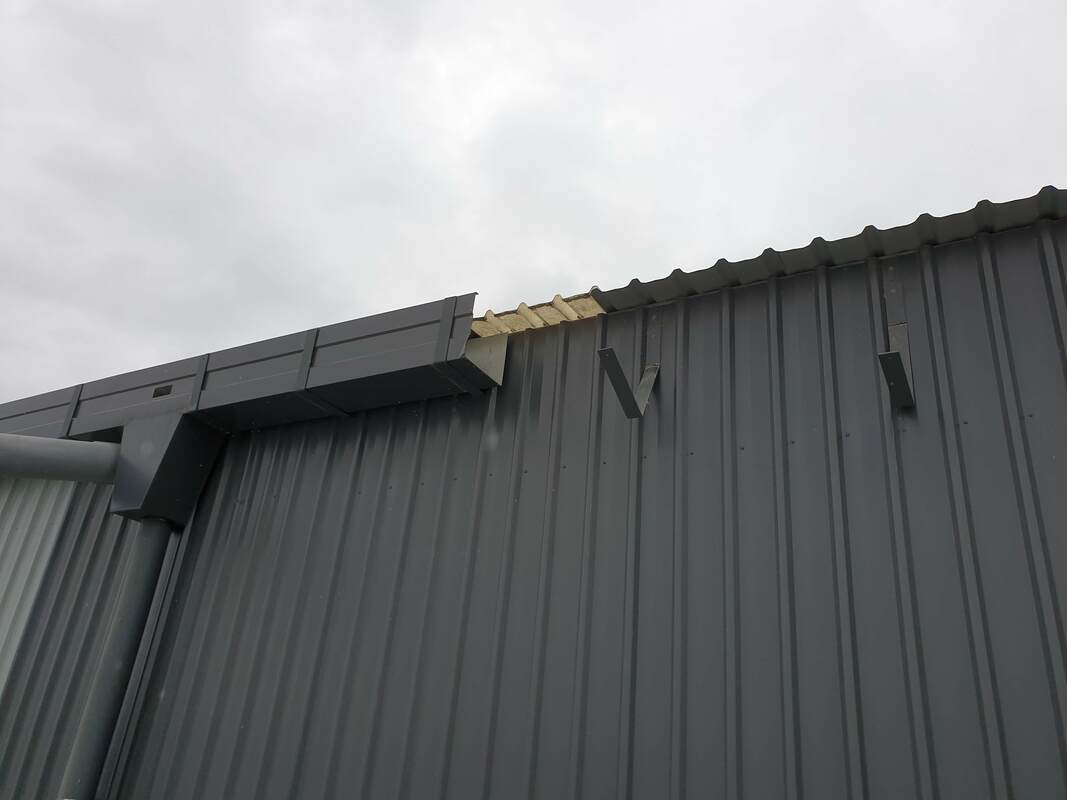|
Safeguarding Your Home against Hail Storms
Hail storms can cause havoc for homes, leading to serious roof and property damage after major downpours. This damage doesn’t just happen after those rare days when you get golf ball sized hail stones, either. Serious damage can occur after a hail storm of any size or magnitude. Luckily, there’s always something you can do today to prevent wind and hail damage in the future. Follow these three basic steps to ensure that your roof will withstand any hail storm that passes through your neighbourhood. 1. Examining the Flashing At Ideal Roofing, we recommend making semi-frequent assessments of your roof’s general health and well being. Paying particular attention to your roof's flashings is of monumental importance when assessing how hail resistant your property is. Ensuring your flashings are in pristine condition and undamaged will help prevent further overall damage during a hailstorm. 2. Consider Hail Resistant Materials Not all roofing materials are made equally when it comes to their protection against hailstorms. Clay tiles, for instance, are famously brittle and ineffective after being hit by hail of any size. Meanwhile, asphalt-based roofing performs far better and is historically effective, even in the wake of hail. While not as steadfast as some asphalt roofing, metal sheets are a good hybrid that will cover you in many different circumstances. Metal roofing has the potential to dent under severe hail, but it is generally strong and reflexive against most grades of hail. Balanced with its other great properties, this makes metal roofing a strong choice for wet weather. 3. Look for Materials Rated for Wind Speed Choosing roofing that is wind resistant is absolutely essential to ensure the safety of your property during any kind of stormy weather. When searching for appropriate roofing materials, you should balance the pros and cons in regards to different facets of a storm. Clay tiles, for instance, are remarkably effective when safeguarding against hail while also being quite poor in extreme wind. Not only are they susceptible to fall off in high winds, but they can also turn into dangerous projectiles once this happens. Metal roofing is seen as the premier roofing option when it comes to the wind, boasting the ability to withstand winds of up to 180 – 260 km/h. CONSULT AN EXPERIENCED ROOF CONTRACTOR After making a rough initial assessment of your property, we advise you to contact a professional roofing contractor to get the complete picture. They will be able to answer all of your burning questions and properly advise you on how to best balance your largest roofing concerns. For complete roofing assessments and advice in Sydney, look no further than the experts at Ideal Roofing. Contact us to speak to our friendly staff today.
0 Comments
The 4 Most Common Roof Leak Causes and How to Fix Them
A leaky roof can cause a great deal of frustration and anguish every time significant rainfall occurs. Having to put buckets down under the leaky spot, losing paperwork to the leak and the constant dripping sound at night are all common annoyances during this period. You also risk more serious damage and costs through the water damage that a leaky roof will inevitably cause. While some roof damage occurs through general wear and tear, some is directly related to unexpected damage to specific roofing areas. At Ideal Roofing, we have compiled a list of the 4 most common roof leak causes to help you understand and resolve your roofing problems. 1. Cracked Flashing Flashing is the thin pieces of metal installed under your roofing shingles. It creates a barrier for your home against wet weather and other wild conditions. This barrier is often sealed with tar by roofers and can be broken or penetrated over time from natural wear and tear. When this seal is broken, flashing is left exposed, allowing elements such as wind and rain to affect your property. 2. Broken Shingles Broken or missing shingles are the easiest problem to spot on your roof due to the fact that shingles make up the outer layer of a roof. Damaged shingles are identifiable by the holes, cracks and patches that will pepper your roof. Similar to cracked flashings, shingle damage occurs after general wear and tear. 3. Your Skylights Were Not Properly Installed If you notice wet spots underneath your lights and moisture forming around them, it will be quite clear that your skylights are the cause of your leaks. These leaks are really easy to spot and are much easier to fix than structural damage to flashings or shingles. These leaks occur thanks to improper measuring and fitting of the lights upon installation. 4. Blocked Gutters If you see leaves sticking out of a gutter, this is a sure sign that there are blocked gutters nearby. You will also notice that there is no water trickling out of a downpipe, indicating that the gutters are not doing their job. These leaks are very easy to fix yourself and don’t really require professional help. We suggest using a straightened coat hanger to prod away the blockage and release the trapped water. CALL A ROOFING SPECIALIST TODAY WHATEVER THE CAUSE OF THE PROBLEM, IF YOU ARE FACED WITH A LEAK IN YOUR HOME, WE ADVISE SEEKING PROFESSIONAL HELP IN MOST CASES. THESE PROBLEMS USUALLY REQUIRE A ROOFING PROFESSIONAL TO REMEDY THE UNDERLYING ISSUE AND REPAIR YOUR LEAKY ROOF. WITH PROFESSIONAL ASSISTANCE, YOU CAN ALSO BE SURE OF A JOB WELL DONE. Don’t put up with an annoying leaking roof any longer. Contact Sydney’s roofing experts at Ideal Roofing for no fuss roof repairs today. |
Categories
All
|



 RSS Feed
RSS Feed





